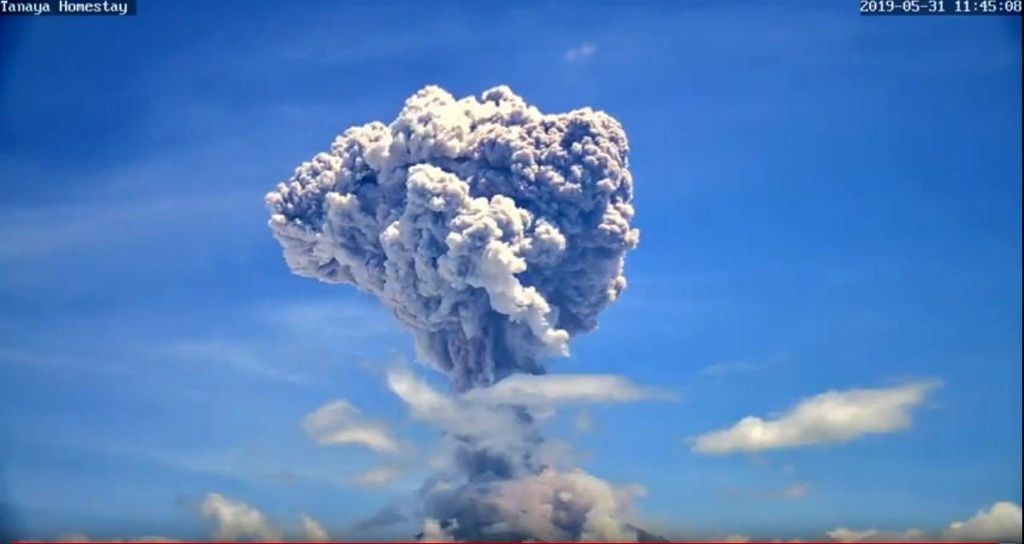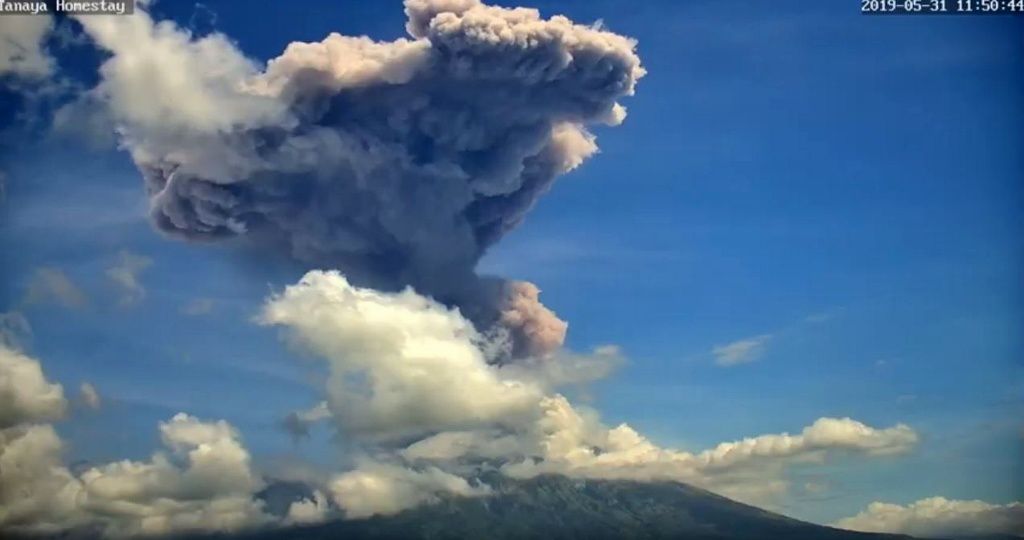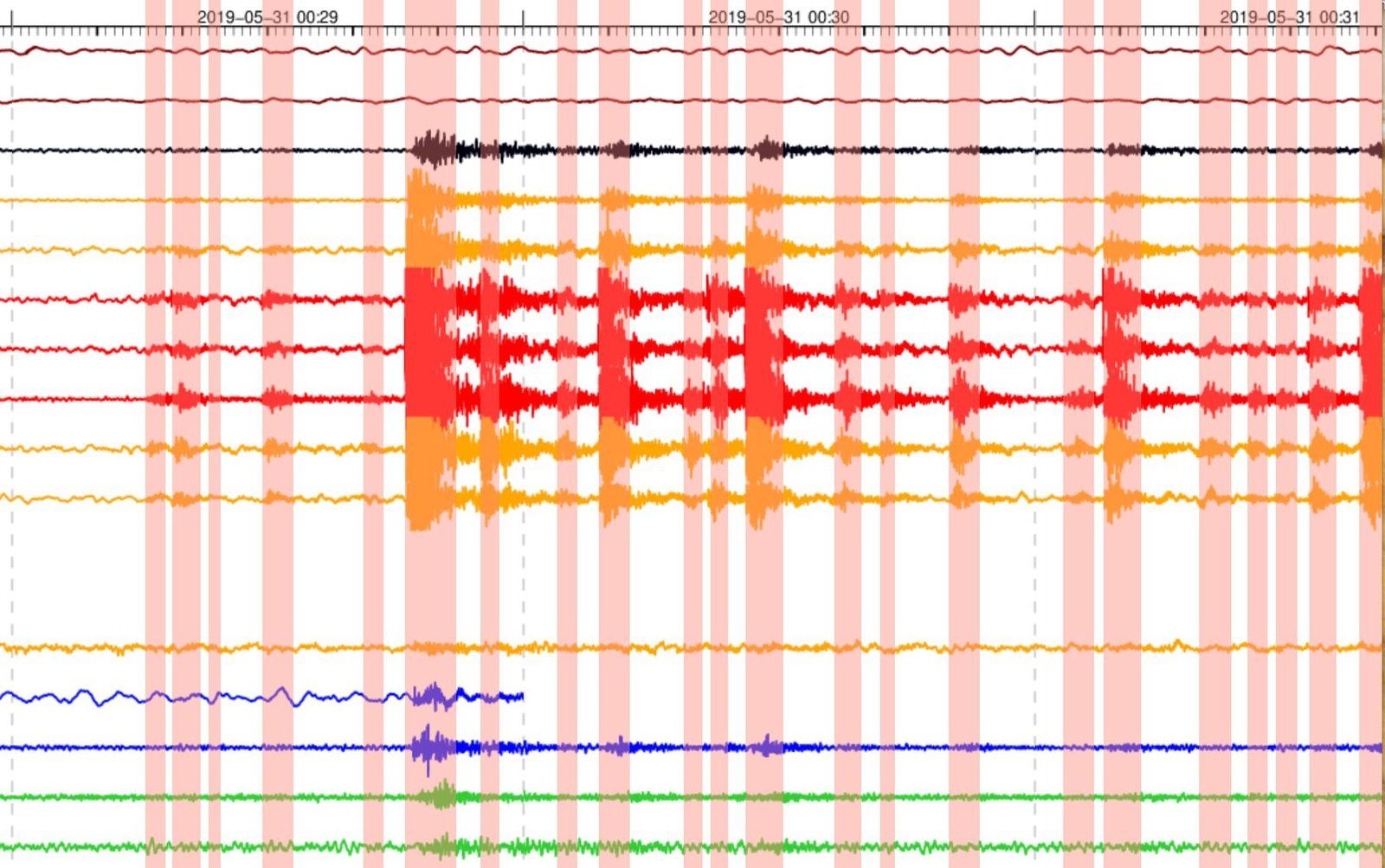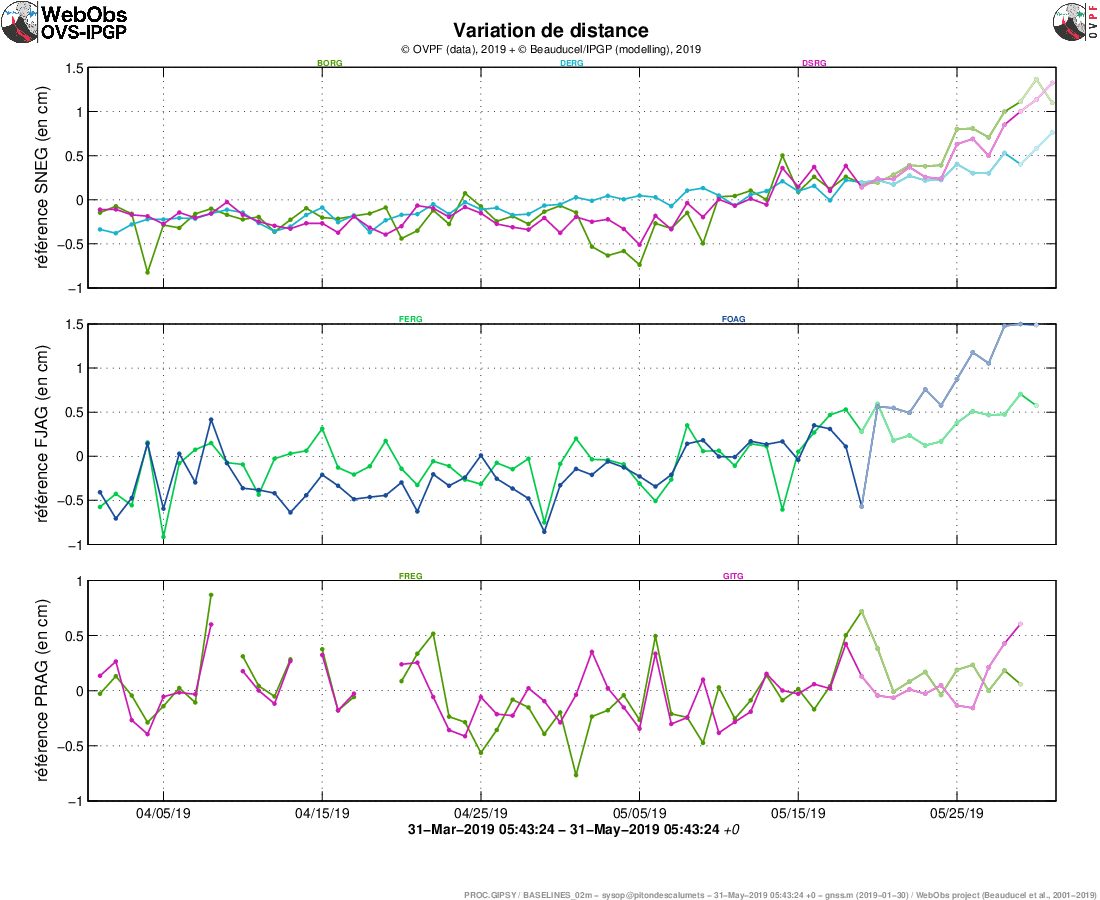Actualité volcanique, Articles de fond sur étude de volcan, tectonique, récits et photos de voyage
Par Bernard Duyck
Agung - eruptive plume of 31.05.2019 at 11:45 and 11:50 WITA - photos Screen capture from VolcanoYT webcam. / via O.L.Andersen
An eruption of Agung volcano in Bali took place on May 31, 2019 at 11:42 am WITA. The height of the ash column was observed at ± 2000 m above the summit (± 5 142 m above sea level). The column of ash was gray, thick in intensity and inclined to the northeast and east. This eruption is recorded on a seismogram of maximum amplitude of 30 mm and a duration of ± 8 minutes 4 seconds.
There was a roar in the Rendang post
Currently, G. Agung is at Level III (pending) with the usual recommendations. The Vona is orange
Source: PVMBG, Magma Indonesia and VAAC Darwin
After a first day of strong seismicity recorded on May 27, 2019 under the Piton de la Fournaise summit directly above the superficial magmatic reservoir (33 superficial volcano-tectonic earthquakes, <2km deep),
again a strong seismicity was recorded on May 30 (54 earthquakes VT)
and at the beginning of May 31st (109 superficial volcano-tectonic earthquakes, <2km deep, between May 30th and 31st 5am local time) with in particular two small short-lived seismic crises on May 31 from 2:43 am to 3:00 am (local time) ) and from 04:29 to 04:37 (local time).
Added to this for the day of May 30, a detection of sulfur species (H2S and to a lesser extent SO2) late afternoon on the multi-gas station of the OVPF located at the top of the volcano.
This seismic activity follows the resumption of inflation (swelling) of the volcano recorded since early May and accompanied by an increase in CO2 concentrations in the far-field soil (Plaine des Cafres) and near (Gite du Volcan).
This seismic activity shows that the environment is weakened and that this embrittlement is accelerated following a pressurization of the superficial magmatic reservoir fed by deeper magma.
Note that this process of pressurizing the superficial reservoir can last several days before the roof of the tank becomes brittle and breaks, thus giving rise to an injection of magma towards the surface, but can also stop without giving place to an eruption.
Source: OVPF
Piton de La Fournaise - Illustration of the deformation from March 31 to May 31, 2019. Here are shown basic lines (variation of distance between two GPS receivers) crossing the building of Piton de la Fournaise, at the top (at the top), at the base of the terminal cone (in the middle) and in the far field (at the bottom) (see location on the associated maps). A rise is synonymous with elongation and therefore swelling of the volcano, inversely a decrease is synonymous with contraction and therefore deflation of the volcano. Any periods colored in light pink correspond to eruptions.
At Etna, we notice this morning a drop in the tremor level, without it reaching the base level.
Mirova reports high thermal anomalies on May 30th and 31st, 2019, between 730 and 9,066 MW.
On the webcam of Monte Cagliato, there are two lava flows, still very hot, this morning, on each side of the base of the new crater southeast (NSEC)
Sources: INGV & Mirova
Etna - eruptive fracture on the SSE flank of the NSEC - photo Gio Giusa 30.05.2019 / https://www.facebook.com/giovanni.giusa
Thème Magazine - Hébergé par Overblog











